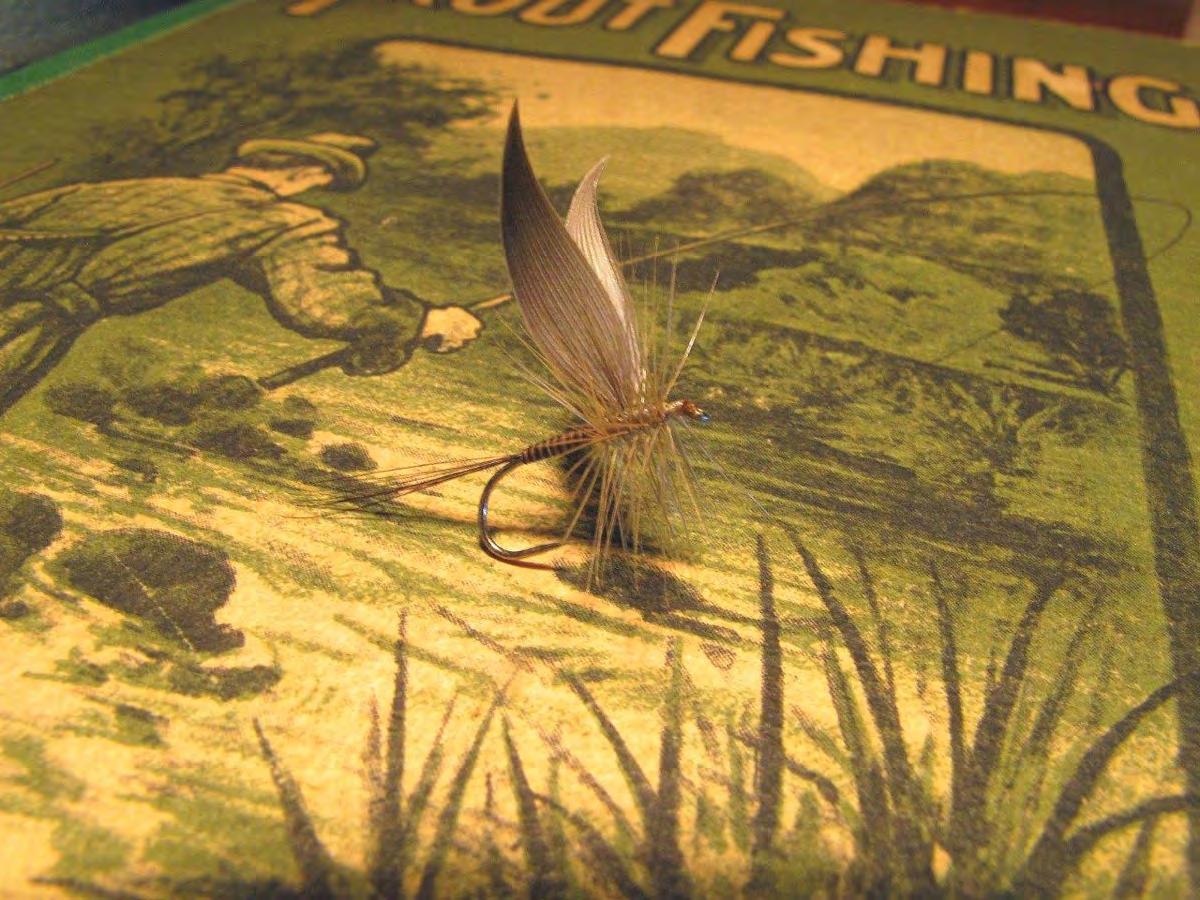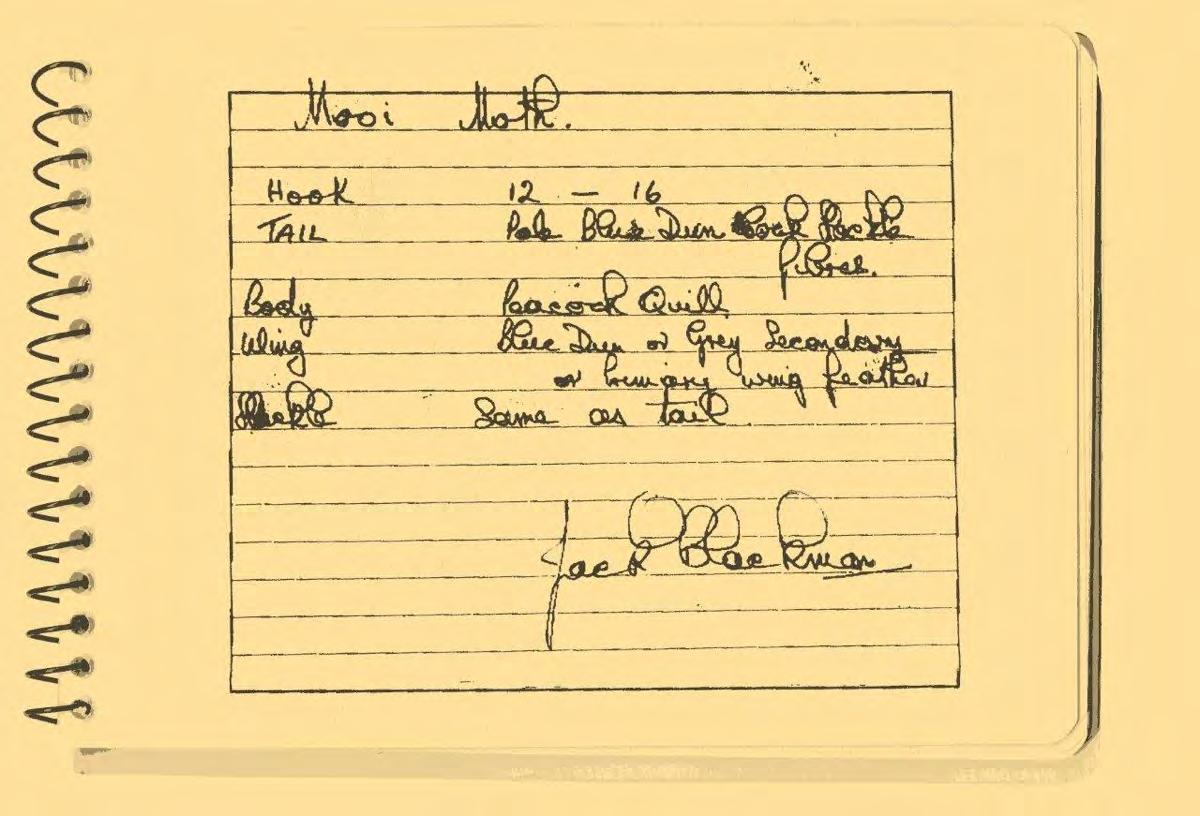
7 minute read
Heritage flies part 1 by Peter Brigg
On the one hand, the reasoning behind our fly patterns amounts to a kind of mythmaking that explains the way they are; on the other, our explanations are like performance art and all quite mystifying. Either way, they bear the stamp of our individual minds. Our theories are impressed with something of who we are, and the choice of patterns we carry discloses something of us. Ted Leeson. Inventing Montana.
Fly fishing is often spoken of as an art form just as fly tying is in its own right, a craft, a form of artistry. This series of articles is a celebration of this artistry, the innovation and the talents of local fly tyers their vision and imagination; these are our heritage flies.
Advertisement
To begin with it is appropriate to step back and revisit the history of fishing flies, where it all started, how fly tying has evolved and the origins of our own particular South African style; unfolding constantly forming and worthy of recognition. The use of artificial flies to deceive fish was first recorded at the end of the 2nd century when Roman Claudius Aelianus described the practice of the Macedonian anglers on the Astraeus River by saying “...they have planned a snare for the fish, and get the better of them by their fisherman’s craft ….They fasten red wool around a hook, andit on to the wool two feathers, which grow under a cock’s wattles, and which in colour are like wax”
Little was written on fly fishing after the earliest recordings until the book attributed to Dame Juliana Berners, The Boke of St Albans was published in 1496. It contained a Treatyse on Fysshynge with an Angle in which there are instructions on rod, line and hook making, dressings for various flies and the times of the year when they should be used. And, then there is a record dating back to the 15th Century of a manuscript held at the Bavarian Abbey of Tegernsee, which lists some fifty different fly patterns for catching various species of fish including salmon and trout. In 1676 Izaak Walton’ s classic, Th e Complete Angler (1653) was expanded by the addition of a chapter by Walton’s friend, Charles Cotton in which he listed 65 trout flies that also reflected a marked understanding about regional variations in fly patterns. This chapter chapter is regarded as significant in the context of the progress and diversification of fly fishing and diversification of flyfishing and consequently imitative fly design. However, the firsts book which dedicated complete sections to fly tying appeared in 1774. The Art of Angling, by Richard Bowker is regarded as the first handbook on the subject. He provided a list of his own flies, suggesting a sound knowledge of entomology and even described his ideas on techniques of fishing, such as the upstream methods.
In the 19th century fly fishing on the slow, clear chalkstreams of southern England like the famous River Test in Hampshire, F M Halford imposed his idiosyncratic view on dry fly fishing and established a follow-ing of anglers preoccupied with this single method approach, rejecting nymph and wet fly practices. Fly fishers needed to have flies that would float over the weed that typically grows close to the surface of these streams: a requirement that became the foundation for the construction of their beautifully tied dry flies imitating in part-icular the adult mayflies. It is understandable, therefore, that the purists were shaken to the core when Edward Mackenzie Skues promoted the use of nymph and wet fly techniques in these streams were were shaken to the core when George Edward Mackenzie Skues promoted the use of nymph and wet fly techniques in these streams, a method he expounded the virtues of in his two books, Minor Tactics of the Chalk Stream a nd The Way of a Trout with the Fly. Skues’ techniques were more readilyaccepted and popularly practiced in Scotland and northern England. W C Stewart, a Scotsman, was one such proponent of the wet fly and who published a book, The Practical Angler in 1857. Perhaps one of his better-known flies being Stuart's black spider which is still being used to good effect to this day. exact imitations; the same approach followed by modern day fly tyers. He also advocated the importance of replicating the insect’s size, form and appearance rather than to tie exact imitations; the same approach followed by modern day fly tyers. The European colonialists who reached North America during the 18th and 19th Centuries, brought with them to their new land, a knowledge and interest in fly fishing. By the end of the 18th century the sport had taken root in America. The explosion of interest saw the emergence of anglers like “Uncle Thad” Norris, Theodore Gordon, Edward R Hewitt, George LaBranche, and a host of others who not only fished the rivers of the Catskill mountains, but also made contributions to a distinctive, American style of fly fishing and fly tying. This tradition established the Catskills as the "Birthplace of American Fly fishing". Theodore Gordon who inherited a British c halk stream tradition of fly fishing, pondered over it, and then spawned a uniquely American school. Experimenting with hair wing flies he developing the so-called “Bumblepuppies". These were the the predecessors of the buck-tail patterns that were subsequently used so extensively. He had laid the foundation for the Catskill School, which eventually had a huge impact on
American fly tying. During the second half of the 19th century trout acclimatisation took place around the world with brown trout ova from hatcheries in ScotlandAustralia, New Zealand, Argentina and South Africa. In South Africa the introduction of trout into our waters initially in the then Natal an d Cape Province, wa s m ostl y by Englishmen who had settled in the country.
The efforts, often under very difficult and trying conditions, of men like A R CampbellJohnston, Lachlan MacLean, J D Ellis, and John Parker eventually paid off and many of our waters were first seeded with trout in the 1890s. In the late 1800s and first half of the 1900s fly fishing techniques and the flies used on South African w aters followed almost entirely the British school; traditional flies like Invicta, March Brown, Teal and, Coch-y-bondhu, Greenwell’s Glory, Wickham’s Fancy, Adams, Alexandra, Iron Blue Dun and many more, dominated the scene. These early English influences progressively changed over time with the growth of all aspects of the sport in the USA. Since the 1970s there has been a decided swing in favo u r o f th e Am e ric a n app ro a ch , influenced also by the similarity of our waters to those in the USA,. However, a decade later, new fly-fishing techniques and, the introd-uction from anglers in Europe of bead-head nymphs (Roman Moser) and materials such as Cul de Canard (Marc Petitjean) have also had a significant impact, not only on fly tying, but also on some of our fishing methods.
Notwithstanding the roles that the British, Americans and later the Europeans have played in shaping our direction, we as South Africans have created some truly unique fly patterns for both fresh and saltwater fish species – these are our heritage flies.

Mooi Moth 1900
Based on limited early records the Mooi Moth was more than likely the first imitative dry fly to be tied and fished in South Africa. It clearly reflects the British influences of the early 1900s with its upright matching slips of wing feather. The fly is referred to in a number of publications commenting on fly fishing in South Africa, the earliest reference being in the Hardy Catalogue (BAS Printers Limited 1923) in an article titled Trout Fishing in South Africa . It also appears in SA’s oldest fishing record book at Trout Bungalow that is situated on the banks of the Mooi River outside Nottingham Road. Unfortunately, the originator of the Mooi Moth remains a mystery.

According to the late Bob Crass, the fly seems to have been used to imitate large mayfly hatches, possibly Neurocaenis, often experienced in late afternoons on the Mooi River in Natal. Jack Blackman cited its dressing as:
Hook - Size 14 – 16.
Tail - Blue dun hackle fibres.
Body - Stripped peacock quill.










